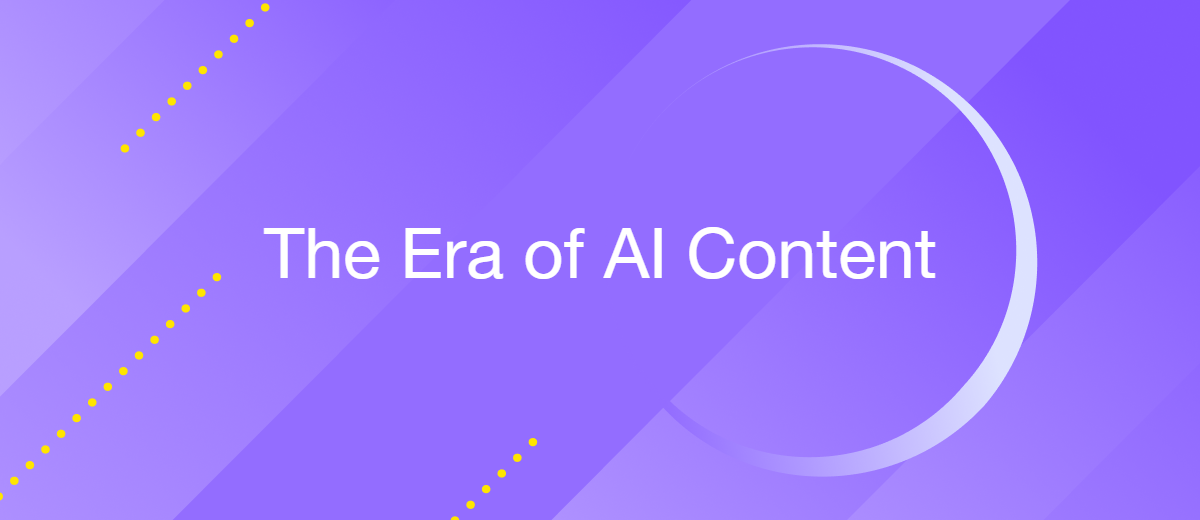AI‑Powered Content Creation: Opportunities and Pitfalls
Artificial intelligence has radically transformed approaches to digital content creation and distribution. AI in content marketing has become an integral part of brand and media strategies. By using artificial intelligence, professionals have discovered new opportunities as well as significant risks. In this article, we'll explore how AI tools help improve the quality and speed of content creation and their limitations.
The Rise of AI in Content Creation
One of the most valuable capabilities of artificial intelligence is its ability to generate and process content. Generative AI tools for businesses and individuals effectively automate the creation and editing of text, images, videos, music, speech, and other content formats.
These tools are powered by machine learning (ML) models developed using large datasets. By processing training data and information from the internet, they quickly deliver relevant and original content based on user requests.
The emergence of publicly available generative AI services has fundamentally changed the approach to creating and distributing assets. They've made content creation accessible to everyone without requiring specialized skills or additional tools.

AI-powered content creation spans a wide range of areas:
- Texts. Natural language processing (NLP) enables artificial intelligence to create, edit, and analyze various text formats from scratch: posts, announcements, longreads, scripts, press releases, and more.
- Images. Specialized text-to-image models efficiently generate images of any subject and style, both from scratch (based on a text query) and by reworking existing content.
- Video. AI algorithms create professional, high-resolution videos with the required timing based on text queries, images, or existing videos.
- Music. Artificial intelligence creates high-quality original music tracks and sound effects based on user requests and uploaded songs.
- Speech. Speech-to-text models can automate speech recognition in different languages and convert spoken audio into text. Text-to-speech models perform this process in reverse, translating text into a voice with specific intonation, tone, and timbre.
- Code. Artificial intelligence can generate, complete, and edit code in dozens of popular programming languages.
How AI Transforms Content Production
A wide range of AI tools for content creators are available. Popular text services include Copy.ai, Writesonic, Jasper, and Hemingway Editor. To create and edit graphics, often use Canva, Adobe Express, or Midjourney. Of course, a special place is occupied by tools from OpenAI, Google, Anthropic, and Perplexity, which are leaders in the AI industry.
Sora, Runway Gen-3, and Pika, as well as Synthesia and Lumen5, have proven themselves well in video-making tasks. To create professional voiceovers or transcribe audio recordings, authors use TTS/STT platforms such as Speechify or NaturalReader. Music and sound effects generation is provided by tools such as Suno AI, Soundful, and Loudly.
The benefits of AI content generation are becoming increasingly important. Let's look at the key advantages.
Accelerated Content Generation
Artificial intelligence creates and edits content much faster than humans. It makes it possible to easily automate these processes without significant resource expenditure. Thanks to the potential of AI, content creators and marketers can deliver more content to their audiences in less time. They also gain the opportunity to free themselves from routine tasks and dedicate more time to generating ideas, developing strategies, and other important processes.
Simplified Scaling
When comparing human vs. AI content, one significant advantage of the latter is its ability to scale the generation and delivery of content to audiences. Artificial intelligence creates dozens of texts or images in minutes. This advantage follows from the previous one. Companies or individual users can speed up workflows. And therefore there is an opportunity to scale qualitatively, if there is such a task.
Effective Personalization
AI algorithms effectively personalize content, repeatedly reworking, customizing, and adapting it to different platforms and audience segments. They can rewrite text in seconds to achieve the desired tone of voice or change an image, giving it a different style or adding or removing objects. Artificial intelligence is excellent at localizing content and translating it into multiple languages. It can also adapt materials to the cultural specifics of particular countries.
Improved Search Engine Optimization
Specialized services don't just generate text and images. They also perform a range of related tasks, from developing an AI content strategy to checking the grammar, readability, and SEO of content. Artificial intelligence capabilities enable professional-level content optimization for the latest search engine and other digital platform requirements. To achieve this, AI algorithms select relevant keywords, create meta tags, and evaluate the SEO metrics of texts and websites.
Cost-Cutting
Effective use of AI services for content creation provides businesses with significant cost savings. High productivity and speed of content generation, coupled with low production costs, enable scalable materials production without the need to expand staff or budget.
Challenges and Limitations of AI Content
Despite their impressive capabilities and advantages, AI tools are not yet an ideal solution for content creators. To effectively use such technologies, it's important to consider their key limitations and challenges. This helps avoid errors that occur even with the most advanced models.
Key limitations:
- The quality of AI-generated content can be far from ideal due to inherent errors and hallucinations. When working with AI tools, one should check the relevance and reliability of the information they produce. In addition, it is advisable to verify the uniqueness of such materials.
- The quality of AI-generated content directly depends on the data sources and training datasets used to build the model.
- Artificial intelligence only processes and compiles existing data, rather than creating something truly exclusive. The content it generates lacks the spontaneous, original creativity that only human intelligence is capable of.
- A significant problem is ethical issues. AI can reproduce fragments of training data. Therefore, it is recommended to check for uniqueness, especially in industries with high copyright requirements. There is also a threat that the results of AI work can be used to spread false and harmful information.
- AI often has difficulty understanding context and nuance — for example, cultural nuances, idioms, or subtle emotional cues.
Best Practices for Using AI in Content Creation

To get the most out of artificial intelligence technologies, it's important to use proven approaches when working with them. We've compiled a list of the best AI content creation practices. They help ensure content is accurate, original, and useful while preventing common errors.
Creative Control
Content generated entirely by artificial intelligence often appears overly dry and formulaic, lacking individuality and a unique style. To address this issue, AI-generated materials must be reviewed and edited by editors or other specialists. Human creative oversight of AI will help make its output more vibrant, emotional, and engaging. By maintaining a lead in content development speed, humans will infuse it with fresh ideas, vibrant emotions, and relevant context.
Fact-Checking and Uniqueness Verification
Editors should exercise creative control and carefully verify the facts presented in AI-generated texts. They may contain inaccurate or outdated information. Furthermore, it is recommended to regularly verify the uniqueness of AI content. This will help prevent plagiarism and associated problems with search engines and copyright holders.
Smart Use of Generated Texts
An excess of AI-generated content on a site can be negatively perceived by search engines. This can lead to ranking problems and a deterioration in your resource’s position in search results. It should be noted that Google has not informed about mandatory penalties for sites for using AI. The company notes that the emphasis is on the quality of content. Ranking problems arise when materials are of low quality, duplicate, or do not demonstrate expertise (E-E-A-T).
When filling the site, it is advisable to use artificial intelligence within reasonable limits to avoid sanctions. Ideally, content makers should use AI as an assistant, for example, to quickly search for information or create individual text fragments. Generating all content with it is a bad idea.
Automation of Routine Tasks
Artificial intelligence is capable of collecting, processing, and analyzing vast amounts of information in a short timeframe without sacrificing quality. AI is best suited for automating routine content-related processes (text processing, translation and adaptation, input data collection, etc.). Its algorithms can assist with creative tasks, but such tasks still require constant human oversight and coordination.
Conclusion
Using AI for professional-grade content creation presents new opportunities and challenges. Optimal and consistent results can be achieved by adopting a balanced approach. By following this approach, you will make artificial intelligence a valuable assistant and a useful tool for developing human creativity.
Regarding the future of AI in digital marketing, its potential and adoption in this field, as in many others, are expected to grow rapidly. By wisely integrating AI technologies into work processes, companies and professionals will be able to significantly improve their productivity and enhance their marketing strategies.
Automate processes independently using the online connector ApiX-Drive with no coding or technical skills needed. Detailed instructions are available to help set up integrations quickly and easily:
- Facebook and Airtable Integration: Automatic Transfer of New Leads
- TikTok and Google Sheets Integration: Automatic Leads Transfer
- Tally and HubSpot Integration: Automatic Contact Creation
- Webflow and Slack Integration: Setting Up Automatic Notifications
- Pipedrive and Airtable Integration: Step-by-Step Guide

